Icons of Nevada
January – February 2014
ICONS OF NEVADA
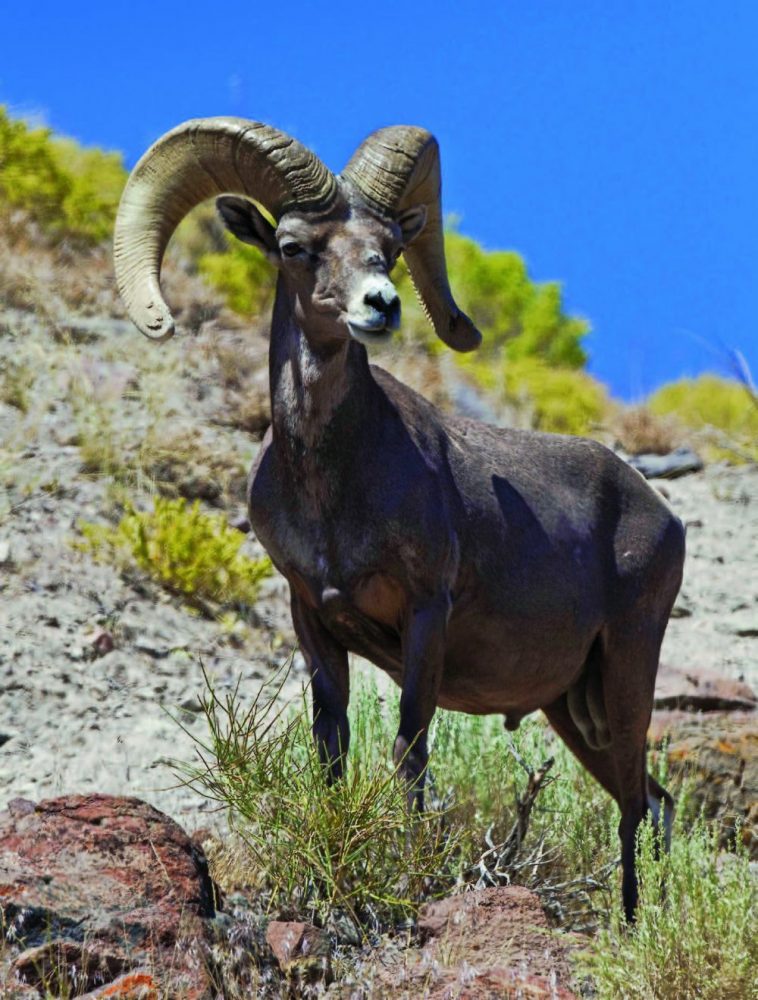 BIGHORN SHEEP
BIGHORN SHEEP
Nevada Relevance: State Animal
The desert (Nelson) bighorn sheep canadensis nelsoni) is found throughout the southern, central, and western part of the state and in mountain ranges as far north as Interstate 80.
Tourist Tidbit: Boulder City’s Hemenway Valley Park is popular for its herds of bighorn sheep, which routinely come to the park to water and graze.
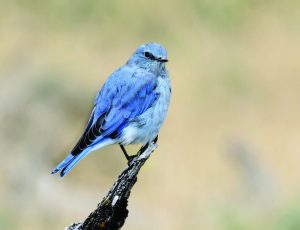 MOUNTAIN BLUEBIRD
MOUNTAIN BLUEBIRD
Nevada Relevance: State Bird
The mountain bluebird (Sialia currucoides) lives in the Nevada high country and eats insects, berries, and other fruit. Most vocal at dawn, its song is a clear, short warble similar to the caroling of a robin.
Tourist Tidbit: The male is azure blue with a white belly, while the female is brown with a bluish rump, tail, and wings.
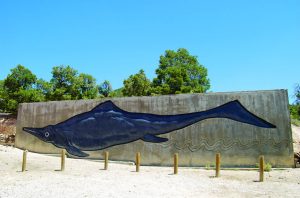 ICHTHYOSAUR
ICHTHYOSAUR
Nevada Relevance: State Fossil
This fossil was found in Berlin, east of Gabbs. Nevada is the only state to possess a complete skeleton (approximately 55 feet long) of this extinct marine reptile. Ichthyosaurs (meaning “fish lizards”) were predatory reptiles that resembled, in body form, modern dolphins.
Tourist Tidbit: Visit Berlin-Ichthyosaur State Park in central Nevada to learn more about this ancient sea creature—and see a ghost town. A 40-minute Fossil Shelter Tour is available most days of the year.
 DESERT TORTOISE
DESERT TORTOISE
Nevada Relevance: State Reptile
The desert tortoise (Gopherus agassizii) lives in the extreme southern parts of Nevada. It spends much of its life in underground burrows to escape the harsh summer heat and winter cold. It can live to be more than 70 years old.
Tourist Tidbit: The Live Exhibits at Las Vegas’ Springs Preserve give guests a firsthand view of how animals such as the desert tortoise have adapted to the harsh climate of the desert.
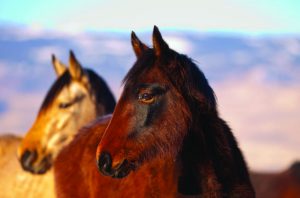 WILD HORSES
WILD HORSES
Nevada Relevance: State is home to nearly half the nation’s wild horses. These majestic animals move with the seasons within more than 80 Herd Management Areas on nearly 15 million acres of public Nevada land managed by the Bureau of Land Management.
Tourist Tidbit: Mustang Monument, Madeleine Pickens’ Wild Horse Eco-Resort and preserve near Wells in northeastern Nevada, is projected to open in June of this year.
 CACTUS
CACTUS
Nevada Relevance: Thrive in Nevada’s desert environment
The cactus at right is a Golden Cholla, spotted near the Southern Nevada community of Nelson, but the cacti family is vast in Nevada. From the Mojave Desert to the high mountains of central and northern Nevada, you can spot cacti just about anywhere in the Silver State.
Tourist Tidbit: Henderson’s Ethel M Chocolate factory is home to the Ethel M Botanical Cactus Garden, open seven days a week for selfguided tours. The Cactus Garden is decorated special for the holidays.
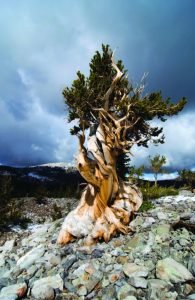 BRISTLECONE PINE
BRISTLECONE PINE
Nevada Relevance: State Tree
The Bristlecone Pine is the more celebrated of Nevada’s State Trees (the other is the Single-Leaf Pinyon) because of its uniqueness—and its age. It’s the oldest-living organism on Earth, with some specimens in Nevada more than 4,000 years old.
Tourist Tidbit: Hundreds of bristlecones exist in Great Basin National Park in three major groves: Mount Washington, Eagle Peak, and Wheeler Peak. The Wheeler Peak Grove is the most accessible and can be reached via a 2.8-mile round-trip hike starting at the end of the Wheeler Peak Scenic Drive.
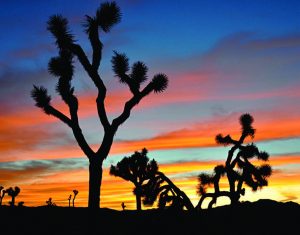
JOSHUA TREE
Nevada Relevance: Thrive in Nevada’s desert environment
The Joshua Tree (Yucca brevifolia) is native to the states of California, Arizona, Utah, and Nevada, where it is confined mostly to the Mojave Desert ranging between 1,000- and 6,000-foot elevations.
Tourist Tidbit: Travelers on U.S. Highway 95—from roughly Goldfield to Las Vegas—will be treated to a steady dose of Joshua Trees. For more of a rural-highway experience, consider the State Route 160 diversion to Pahrump.
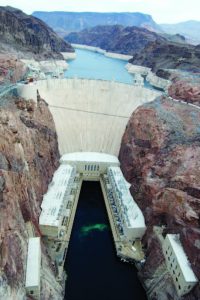 HOOVER DAM
HOOVER DAM
Nevada Relevance: Second-tallest dam in the U.S.
Since its dedication in 1935 and official completion in 1936, this behemoth hydroelectric power producer has been one of Nevada’s most photographed and visited landmarks.
Tourist Tidbit: The recent construction of the Mike O’Callaghan-Pat Tillman Memorial Bridge offers tourists spectacular
views previously only seen from aircraft (the inset photo is taken from the bridge). Regular tours conducted by the Bureau of Reclamation explore the dam inside and out.
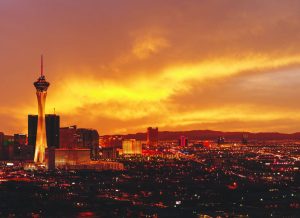 LAS VEGAS STRIP
LAS VEGAS STRIP
Nevada Relevance: One of the only nighttime scenic byways in the U.S.
Known around the world, to say that the Strip is iconic would be an understatement. It’s downright legendary. Drivers and walkers of Las Vegas Boulevard are treated to a world within a city, from the pyramid at Luxor to the mock Eiffel Tower at Paris Las Vegas.
Tourist Tidbit: The Strip is ever growing and evolving.
One of the more recent additions, with a planned “phase one” opening around New Year’s, is The LINQ retail, dining, and entertainment district, which will include the world’s tallest observation (Ferris) wheel.
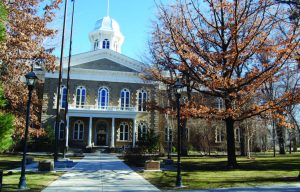 STATE CAPITOL
STATE CAPITOL
Nevada Relevance: Nevada’s Capitol building
Located in the capital of Carson City, this historic Italianate-style building was completed in 1871, seven years after Nevada became a state. According to the Carson City Convention & Visitors Bureau, it’s the second-oldest Capitol building west of the Mississippi River.
Tourist Tidbit: Residents and visitors can take the Kit Carson Trail, a 2.5-mile walking path that showcases the city’s historic buildings, among them the state Capitol. Click on “Kit Carson Trail” at visitcarsoncity.com to hear 16 different “Talking Houses” podcasts.
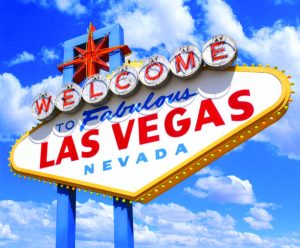 “WELCOME TO FABULOUS LAS VEGAS NEVADA” SIGN
“WELCOME TO FABULOUS LAS VEGAS NEVADA” SIGN
Nevada Relevance: The state’s most famous sign
The flashy sign at 5100 Las Vegas Boulevard South is among the most photographed and visited signs on Earth. No trip to Las Vegas is complete without striking a pose beneath the 1959 symbol.
Tourist Tidbit: In November, Clark County officials, partners from the Clean Energy Project, and representatives from NV Energy broke ground for the installation of a solar tree to power the iconic sign starting in early 2014.
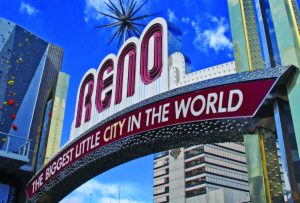 “RENO: THE BIGGEST LITTLE CITY IN THE WORLD” SIGN
“RENO: THE BIGGEST LITTLE CITY IN THE WORLD” SIGN
Nevada Relevance: Northern Nevada’s most famous sign Also known as the Reno Arch, the city has sported its iconic downtown sign, which spans Virginia Street, for many years. Reno’s first arch was erected in 1926 to promote the Transcontinental Highways Exposition, and the slogan “The Biggest Little City in the World” was adopted in 1929.
Tourist Tidbit: If you have time, be sure to walk a few blocks southeast to Lake Street near the Truckee River where the original arch resides.

